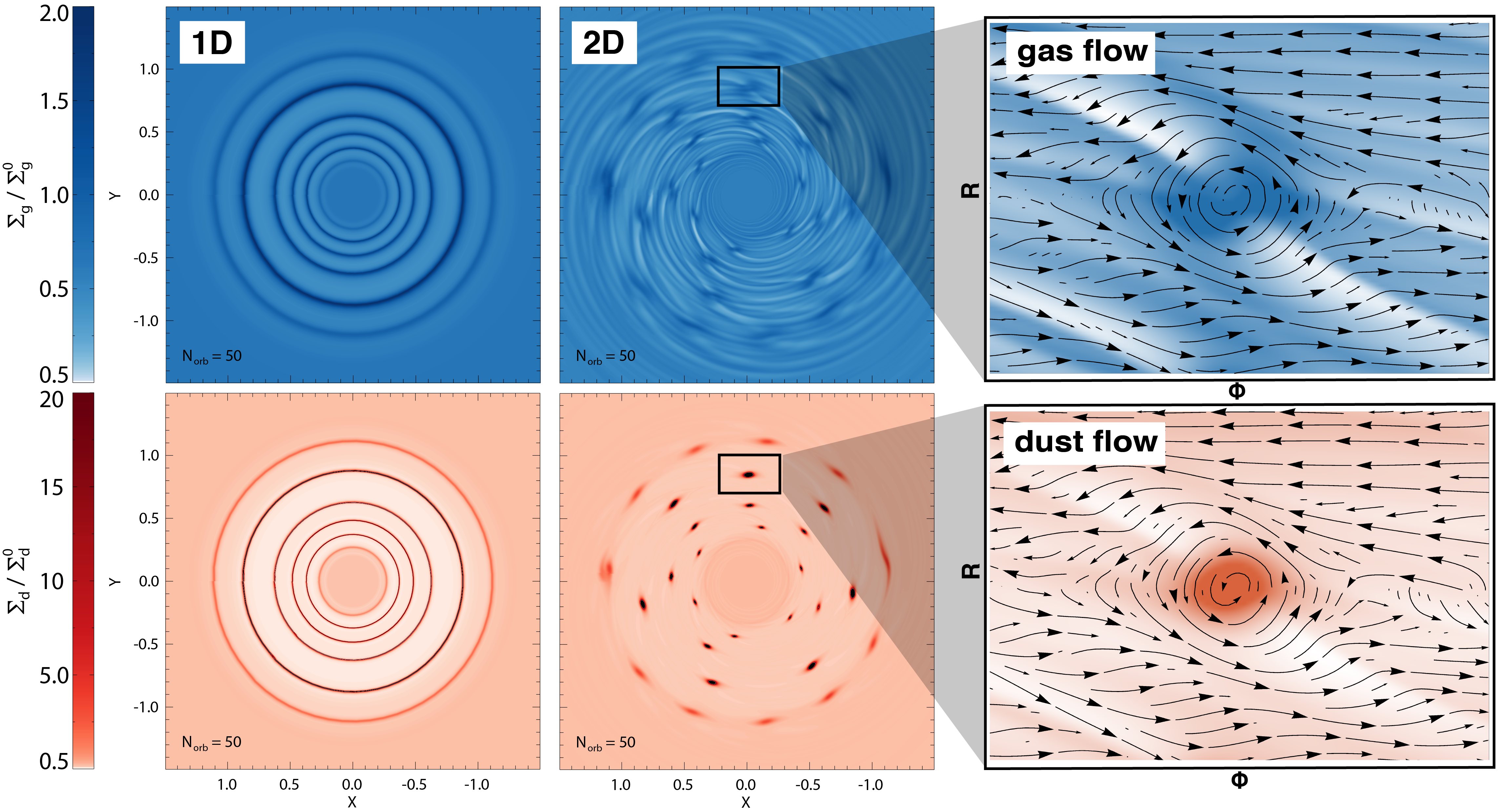Self-Sustaining Vortices in Protoplanetary Disks:
Setting the Stage for Planetary System Formation
The core accretion scenario of planet formation assumes that planetesimals and planetary embryos are formed during the primordial, gaseous phases of the protoplanetary disk. However, how the dust particles overcome the traditional growth barriers is not well understood. The recently proposed viscous ring-instability may explain the concentric rings observed in protoplanetary disks by assuming that the dust grains can reduce the gas conductivity, which can weaken the magneto-rotational instability. We present an analysis of this model with the help of GPU-based numerical hydrodynamic simulations of coupled gas and dust in the thin-disk limit. During the evolution of the disk the dusty rings become Rossby unstable and break up into a cascade of small-scale vortices. The vortices form secularly stable dusty structures, which could be sites of planetesimal formation by the streaming instability as well as direct gravitational collapse. The phenomenon of self-sustaining vortices is consistent with observational constraints of exoplanets and sets a favorable environment for planetary system formation.

Excitation of viscous ring instability in 1D (first column) and Rossby instability in 2D for V2 model.
Normalized gas and dust distributions are shown with blue and red colors.
Appeared in Regály, Zs.; Kadan, K.; Dullemond, C. P. 2021, MNRAS, Volume 506, Issue 2, p2685
2021MNRAS.506.2685R
arXiv:1305.5676

